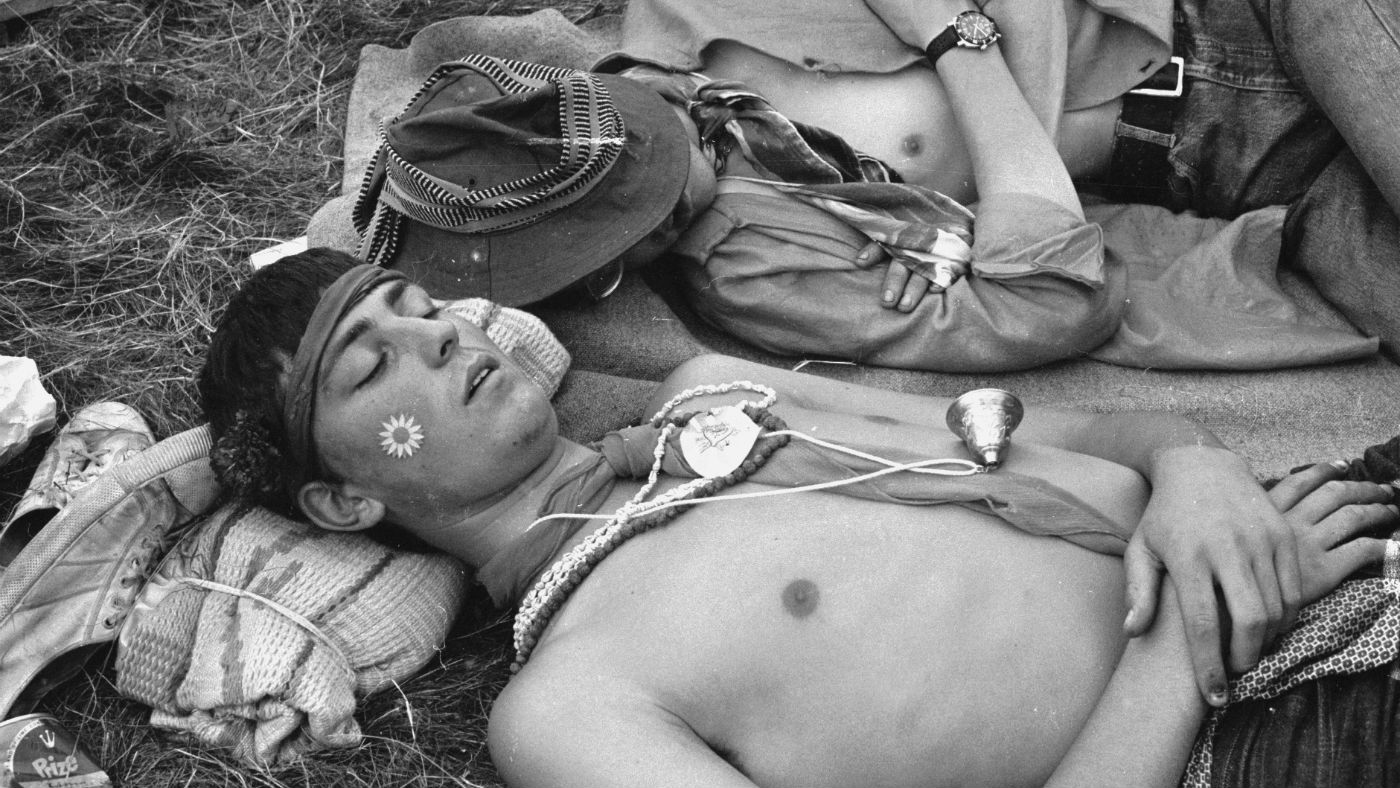The truth about the Summer of Love
In 1967, 100,000 young people descended on San Francisco for a radical living experiment

Fifty years ago, 100,000 hippies converged on an unassuming San Francisco neighbourhood, launching a grand-scale living experiment known as the Summer of Love.
To most Americans, 1967 hardly seemed like an auspicious year for a summer of love.
After the first US boots hit the ground in Vietnam, the spectre of conscription hung over every young man's head. On college campuses, students destroyed their draft cards and took to the streets to protest the country's bloody involvement in the conflict.
The Week
Escape your echo chamber. Get the facts behind the news, plus analysis from multiple perspectives.

Sign up for The Week's Free Newsletters
From our morning news briefing to a weekly Good News Newsletter, get the best of The Week delivered directly to your inbox.
From our morning news briefing to a weekly Good News Newsletter, get the best of The Week delivered directly to your inbox.
There was domestic unrest, too, as tensions stirred up by the Civil Rights movements exploded into race riots across the country.
For many suburban young people exposed to these harsh realities, their parents' vision of the ‘American Dream’ - a land of white picket fences and even whiter communities - began to look increasingly hollow.
Sickened by the Vietnam War and what they saw as a shallow, consumerist culture, these "flower children" pushed back against the idea that the path to happiness was littered with gleaming, white kitchen appliances.
Turn on, tune in, drop out
A free daily email with the biggest news stories of the day – and the best features from TheWeek.com
Soon, this subculture developed its own signature "look" - long, untamed hair, bell-bottom jeans, sandals and kaftans - much of it influenced by their interest in Native American culture.
Many experimented with marijuana and psychedelic drugs as part of their quest to reject traditional values and discover a new meaning in life, an attitude exemplified by Timothy Leary's famous phrase: "turn on, tune in, drop out".
In 1967, these aspiring drop-outs converged on San Francisco's Haight-Ashbury neighbourhood, already a focal point for the burgeoning west coast counterculture movement.
When spring break and then the summer holidays rolled around, the ranks of the hippie community swelled by thousands of high school and college students flocking to the mecca of "flower power".
The newcomers slept and lived wherever there was space, often establishing communes where members were expected to work together as equals and pool resources.
By June 1967, the "flower children" of Haight-Ashbury were a fully-formed community of 100,000, with regular food distributions, a free medical clinic and their own newspaper, the San Francisco Oracle.
San Francisco's Summer of Love was a utopian living experiment on a scale never before seen in the US, and its ideology of love, peace and the freedom from social constraints, inspired poetry, art and music.
For many, the anthem of the movement was San Francisco (Be Sure to Wear Flowers in Your Hair) by The Mamas & the Papas, a bestseller throughout the summer, while others preferred the rawer sounds of the Grateful Dead and Jefferson Airplane.
The Grateful Dead's Grace Slick remembers that time as "just a whole bunch of people playing music and hanging out and having fun".
"It was pretty much that simple," she told Voice of America.
The dark side
William Schnabel, who was a 17-year-old San Francisco high school student during the Summer of Love and went on to write a book about the era, told the Los Angeles Times that there was a dark side to life in Haight-Ashbury, however.
Despite the utopian vision behind the movement, ingrained prejudices and social tensions reared their heads.
For one thing, most "flower children" were white and middle-class - a fact not lost on mostly black, working-class residents of the neighbouring Fillmore district, where the sight of suburban kids calling for a rejection of materialism sounded hopelessly naive, says Schnabel.
"The Afro-Americans wanted part of the American dream," he said. "They wanted all these so-called meaningless goods that the hippie culture was rejecting."
Women attracted to the hippie movement for its rejection of gender norms and embrace of sexual freedoms often found themselves disappointed, too, according to Schnabel.
"In many ways, women did seem to have a subservient role in the counterculture," he said. Even in communes whose departure from social norms was shocking mainstream America, the lion's share of cooking, cleaning and child-rearing fell to the female residents.
Nonetheless, the San Francisco movement spawned offshoots across America and beyond. Hippie hubs "were blooming in every major US city from Boston to Seattle, from Detroit to New Orleans," Time magazine wrote in a July 1967 story.
London soon caught the hippie spirit, with the capital's countercultural art, fashion and music scene earning it the title "Swinging London".
Soho clubs hosted daring new groups like the Rolling Stones and Pink Floyd, while established bands like The Beatles and The Small Faces tapped into the zeitgeist and embraced the psychedelic sounds of the hippie movement.
As autumn approached, the idyll of the Summer of Love started to turn sour, thanks to "an influx of violent heroin dealers into the Haight, subsequent overdoses and, eventually, tourist buses arriving to gawk at the hippies", says The Guardian.
Little by little, the flower children drifted away - many returned to their colleges and schools, taking their radical politics back with them, while some hold-outs decamped into the unspoiled backcountry to set up smaller communes.
Despite its short lifespan, 50 years on the Summer of Love still "looms large over popular culture", says The Conversation.
By questioning every "social, political, economic and aesthetic feature of mainstream Western society", the Summer of Love represented a break from postwar conformity and the dawning of the age of individuality.


